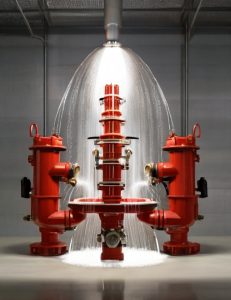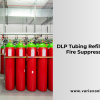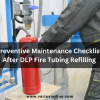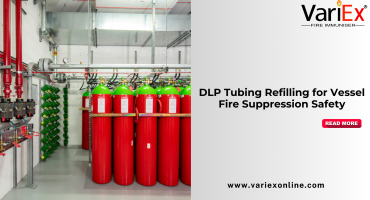![]()
Fire Immuniser
+91-7829629111
Email: info@variex.in
Varistor Technologies Pvt. Ltd.
Block-1, First Floor, Ardente Office One, Hoodi Circle, ITPL Main Road, Bengaluru, Karnataka 560048, IN
What Are The 5 Types Of Special Suppression Systems?
When it comes to fire protection, choosing the right suppression system is critical to safeguarding lives and property. Modern technology has given rise to advanced special suppression systems designed to provide efficient fire suppression for different environments. In this article, we will explore the five types of special suppression systems, their specific applications, and their contributions in protecting against fire hazards.
1. Water Mist Suppression Systems
Water mist suppression systems are highly effective in extinguishing fires by utilizing small droplets of water. This system works by quickly cooling the fire, displacing the oxygen, and suppressing the heat generated. The fine mist created by these systems also helps to minimize water damage. People commonly use water mist suppression systems in areas where water-sensitive materials are present, such as museums, libraries, and data centers.
2. Foam Suppression Systems
Foam suppression systems are particularly suitable for combating flammable liquid fires. This system utilizes a specialized foam concentrate that, when mixed with water, forms a foam blanket that suppresses the flames and prevents re-ignition. People commonly find foam systems in airports, petrochemical facilities, and industrial settings where flammable liquids are often present.
3. Carbon Dioxide (CO2) Suppression Systems
Specifically designed for areas requiring rapid fire suppression without leaving behind any residue, people use carbon dioxide (CO2) suppression systems. CO2 systems work by displacing oxygen, reducing the oxygen concentration to a level that is insufficient to sustain combustion. People commonly install these systems in server rooms, control rooms, and electrical substations.
4. Clean Agent Suppression Systems
Clean agent suppression systems are ideal for protecting high-value assets, sensitive equipment, and environments where water-based systems are not suitable. They use environmentally friendly gaseous agents, such as FM-200 or Novec 1230, that quickly suppress fires without causing harm to humans or sensitive equipment. Companies commonly use clean agent systems in museums, archives, data centers, and telecommunication facilities.
5. Dry Chemical Suppression Systems
People often utilize dry chemical suppression systems in areas with Class A, B, or C fire hazards. This system uses a dry chemical powder, such as monoammonium phosphate, to smother the fire and interrupt the chemical reaction. They are effective in suppressing fires involving flammable liquids, gases, and electrical equipment. Companies commonly use dry chemical systems in industrial settings, warehouses, and manufacturing facilities.
Conclusion
Choosing the right suppression system is crucial for effective fire protection. The five types of special suppression systems discussed in this article offer diverse solutions to combat different fire hazards. Whether it's water mist, foam, carbon dioxide, clean agents, or dry chemicals, each system brings unique advantages when it comes to extinguishing fires and protecting lives and property. By understanding these systems and their specific applications, you can make informed decisions in implementing the most appropriate suppression system for your environment. Remember, investing in the right suppression system is investing in the safety of your surroundings.
Frequently Asked Questions
1. What is a water mist system?
A water mist system is a special suppression system that uses fine water droplets to suppress fires. The mist created by the system helps cool down the fire, starve it of oxygen, and prevent it from spreading further.
2. How does a foam suppression system work?
A foam suppression system works by releasing a foam solution onto the fire. The foam forms a blanket-like layer on top of the fire, preventing oxygen from reaching it and suppressing the flames. Foam systems are commonly used to fight flammable liquid fires.
3. What is a carbon dioxide (CO2) system used for?
People use a carbon dioxide (CO2) system to suppress fires in areas where water may cause damage, such as electrical equipment rooms or computer server rooms. Carbon dioxide displaces oxygen, suffocating the fire and extinguishing it without leaving any residue behind.
4. What are dry chemical suppression systems?
Dry chemical suppression systems utilize dry chemical agents, such as monoammonium phosphate, to suppress and extinguish fires. When discharged, the dry chemicals disrupt the chemical reactions happening within the fire, interrupting the combustion process and putting out the flames.
5. How does a clean agent suppression system work?
Clean agent suppression systems use specialized gases, such as FM-200 or Halon, to suppress fires. Discharge these gases into the protected area to rapidly reduce the oxygen concentration and effectively extinguish the fire. People typically use clean agent systems in environments where they must avoid water damage.
Final Say
We at VariEx.in or Variexonline.com have mastered the art of designing, installing, inspecting, and fixing automatic sprinkler systems with the help of our in-house team, which is capable of delivering the fire sprinkler services you need, whether large or small and at affordable cost.
To schedule a fire sprinkler installation, or you think our services could benefit your commercial property, contact us online or give us a call at, 7829629111
"WHAT YOU CAN READ NEXT"
 Read more +24 November 2023 in Fire Extinguisher
Read more +24 November 2023 in Fire ExtinguisherWhat types of fire extinguishers are available for different fire classes?
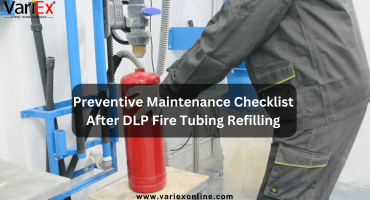 Read more +11 July 2025 in Fire Suppression
Read more +11 July 2025 in Fire Suppression

